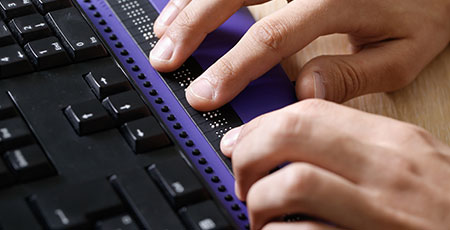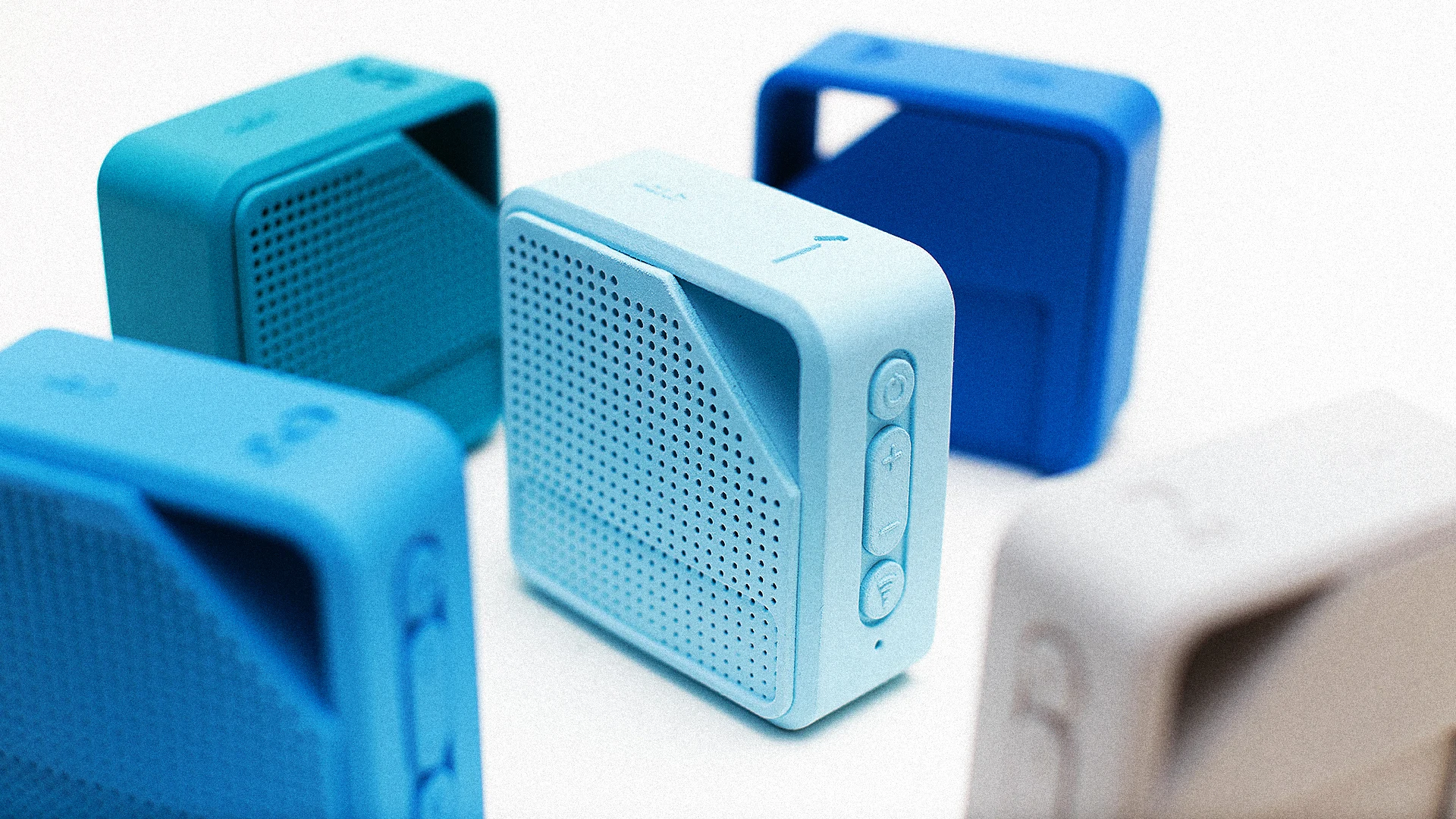A Guide to Life-altering Assistive Innovation for the Blind and Visually Impaired
The development of assistive innovation has introduced a transformative era for people that are visually damaged or blind, offering tools that improve freedom and enhance day-to-day experiences. Innovations such as wise navigating tools and AI-driven applications are redefining exactly how individuals interact with their environments, while easily accessible analysis remedies and clever home technologies promise to further elevate the lifestyle. As these modern technologies continue to evolve, one have to think about not just their functionalities but also their effect on fostering freedom and inclusivity. What does this mean for the future of accessibility?
Smart Navigating Tools
Smart navigating devices are changing the means individuals that are visually impaired or blind interact with their atmosphere. These sophisticated technologies, which integrate general practitioners, audio feedback, and haptic signals, offer users with important info regarding their environments, enhancing their self-reliance and movement.
One prominent instance is the usage of wise walking sticks outfitted with sensing units that spot challenges and provide real-time responses via resonances or audio signs. These devices permit users to browse intricate atmospheres, such as busy streets or crowded public rooms, with increased self-confidence. Additionally, wearable tools, such as clever glasses, are being created to help in identifying faces, checking out text, and determining things, even more boosting the individual's spatial recognition.
Additionally, wise navigation devices are increasingly incorporating expert system to examine information and adapt to customers' choices. This customized approach not just enhances navigation performance yet likewise cultivates a sense of empowerment amongst customers. As innovation continues to development, the capacity for smart navigating tools to develop an extra easily accessible and inclusive globe for people that are blind or aesthetically impaired continues to be promising, eventually reshaping their daily experiences and communications.
Ingenious Mobile Applications
Mobile applications are becoming powerful tools for assisting people that are blind or visually impaired, using a series of capabilities that improve daily living. These apps harness advanced innovation to help with daily tasks, improve availability, and advertise freedom.
One group of ingenious mobile applications concentrates on visual recognition. Applications like Be My Eyes attach users with sighted volunteers by means of video clip calls, enabling real-time aid for jobs such as checking out tags or browsing strange atmospheres. Similarly, apps like Seeing AI use expert system to describe surroundings, reviewed message, and identify objects, supplying individuals with essential details at their fingertips.
Another substantial location is navigating and orientation. Applications such as Aira and Nearby Explorer supply audio assistance, assisting individuals navigate metropolitan rooms easily. They offer individualized assistance, permitting a much more confident exploration of the setting.
Additionally, health and health applications deal with details requirements, such as medication monitoring and health and fitness tracking. These applications intend to cultivate an all natural strategy to health, ensuring that individuals can maintain their health individually.
Wearable Assistive Gadgets
Wearable assistive devices represent a substantial advancement in innovation made to sustain individuals that are aesthetically damaged or blind. These devices improve movement and self-reliance by providing real-time feedback about the surrounding setting. Amongst one of the most significant wearable technologies are wise glasses equipped with electronic cameras and sensing units, which can identify obstacles and relay crucial info via audio signs.

One more ingenious choice includes wrist-worn gadgets that utilize ultrasonic waves to identify obstacles and give navigational aid. These gadgets usually come with personalized setups, enabling customers to tailor the alerts to their particular demands.
The integration of expert system in wearable assistive modern technology is likewise notable, as it continually improves the accuracy and responsiveness of these gadgets. Overall, wearable assistive gadgets are transforming the lives Get More Information of the aesthetically damaged and blind, fostering greater freedom and enhancing lifestyle through ingenious solutions.
Accessible Checking Out Solutions
Available analysis options play a critical function in allowing individuals that are blind or aesthetically damaged to engage with text across various styles. These options encompass a variety of devices and innovations made to boost reading experiences, from traditional print products to digital web content.
One popular service is Optical Personality Recognition (OPTICAL CHARACTER RECOGNITION) innovation, which transforms printed message right into electronic style, enabling customers to pay attention to or check out the material using display viewers. Additionally, specialized e-readers outfitted with text-to-speech capabilities supply personalized reading experiences, allowing users to change font dimensions and background colors for boosted exposure.
An additional effective technique is braille displays, which give responsive comments by transforming digital text into braille. This enables people to go through touch, promoting higher independence and access to literature. Furthermore, mobile applications made for reading scanned books or records can empower individuals with instantaneous access to a vast library of products.

Smart Home Technologies
Smart home technologies have actually reinvented the means individuals who are blind or visually impaired engage with their living environments, enhancing both independence and safety. These cutting-edge options utilize automation and connectivity to create an accessible home customized to the needs of customers.
Smart speakers and voice-activated aides give hands-free control over various gadgets, enabling individuals to change safety, illumination, and temperature level measures through basic voice commands. This capability reduces reliance on sighted aid and fosters a feeling of freedom. In addition, smart lighting systems can be personalized to provide auditory responses or tactile cues, allowing individuals to navigate their homes better.
In addition, security systems geared up with smart electronic cameras and sensors can send out real-time alerts to users, enhancing individual safety and security without requiring aesthetic verification. Automated door locks offer tranquility of mind, allowing individuals to safeguard their homes easily.
Incorporating smart home innovations not just improves everyday living but also encourages social communication with attached tools - Braille displays and notetakers. With ongoing developments in assistive modern technology, the future shows up promising, as more services will arise to additional empower individuals who are blind or visually impaired, guaranteeing an extra comprehensive browse this site and independent lifestyle
Conclusion
In final thought, the advancements in assistive modern technology for the aesthetically damaged and blind represent a substantial leap toward enhancing independence and lifestyle. Smart navigation devices, ingenious mobile applications, wearable tools, accessible analysis options, and smart home modern technologies jointly cultivate an inclusive environment. This assimilation of innovation not just enhances movement and daily living however also encourages people to involve totally with their surroundings, promoting greater freedom and engagement in culture.
Technologies such as smart navigating tools and AI-driven applications are redefining just how users engage with their environments, while obtainable reading options and clever home modern technologies assure to additional boost the high you can try these out quality of life. As innovation continues to development, the capacity for smart navigation devices to produce an extra easily accessible and comprehensive globe for individuals who are blind or aesthetically impaired continues to be promising, inevitably improving their daily experiences and interactions.
Wearable assistive tools stand for a significant advancement in innovation made to sustain individuals that are aesthetically impaired or blind. Among the most significant wearable innovations are clever glasses outfitted with sensors and video cameras, which can recognize obstacles and relay important info via sound cues.
Smart navigation devices, cutting-edge mobile applications, wearable devices, available analysis solutions, and clever home modern technologies jointly cultivate an inclusive atmosphere.